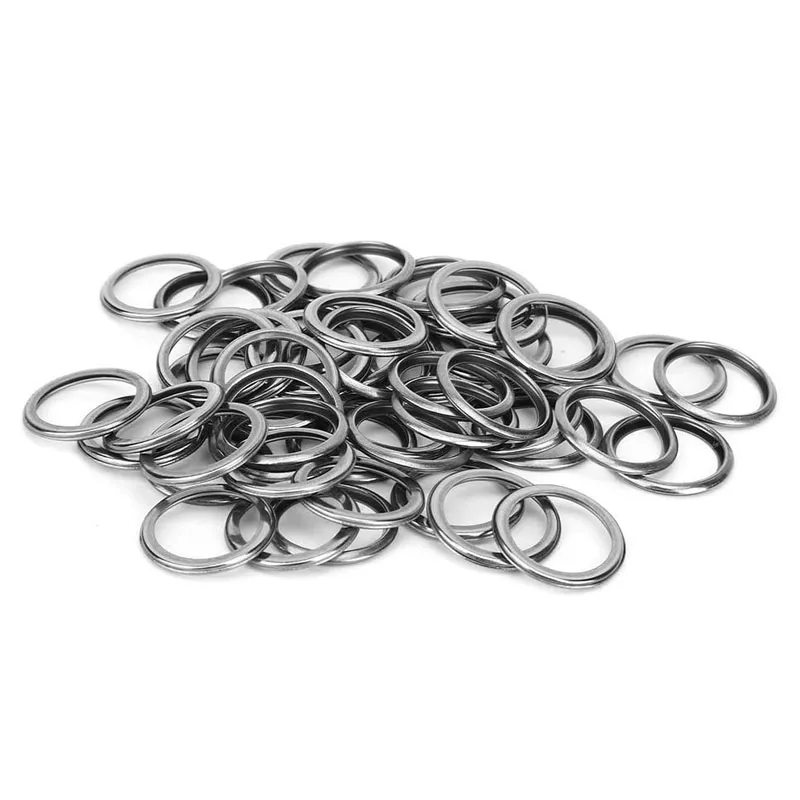Understanding the Importance of Transmission Shaft Seals in Automotive Applications
Understanding Transmission Shaft Seals Importance and Maintenance
Transmission shaft seals are integral components in various machinery and automotive systems, serving a critical function in ensuring the longevity and efficiency of a vehicle's transmission system. These seals are designed to prevent the leakage of fluids, protect against the ingress of contaminants, and maintain optimal performance levels. In this article, we will explore the significance of transmission shaft seals, the types available, common issues, and maintenance practices that ensure their proper functioning.
What Are Transmission Shaft Seals?
Transmission shaft seals, often referred to as oil seals, are specialized sealing devices that fit around the rotating shafts of a transmission system. Their primary purpose is to encapsulate the lubricant within the transmission while preventing external contaminants, such as dirt and moisture, from entering. By creating a barrier that retains necessary fluids, these seals help maintain proper lubrication, reduce friction, and minimize wear on the components of the transmission system.
Types of Transmission Shaft Seals
There are several types of transmission shaft seals, each designed for specific applications and conditions. The most common types include
1. Lip Seals Featuring a flexible lip that makes contact with the shaft, these seals are widely used due to their effective sealing capabilities. They are typically made from rubber or other elastomeric materials.
2. U-Cup Seals These seals resemble a 'U' shape and are often used in hydraulic applications. Their design allows them to maintain contact with the shaft while effectively sealing against pressure changes.
3. Rotary Seals Ideal for high-speed applications, rotary seals are used in areas where shafts rotate at significant speeds. They possess a robust design that withstands the wear caused by rapid movement.
4. V-Seals These seals are designed to seal in one direction, preventing contaminants from entering but allowing for the escape of gases. They are often used in environments where dirt exposure is of concern.
Importance of Transmission Shaft Seals
The role of transmission shaft seals goes beyond merely preventing leaks; they are vital for the overall health of the vehicle’s transmission system. Here are some key reasons why they are important
- Fluid Retention By keeping the transmission fluid contained, seals help maintain the necessary lubrication for the gears and shafts
. This prevents overheating and further damage due to friction.- Contamination Prevention By acting as barriers against dirt and moisture, seals play a crucial role in protecting internal components from damage, thus extending the lifespan of the transmission system.
transmission shaft seal

- Cost Efficiency By maintaining the integrity of the transmission fluid and preventing leaks, seals help avoid costly repairs and fluid replacements.
Common Issues with Transmission Shaft Seals
Despite their durability, transmission shaft seals can suffer from wear and failure over time. Some common problems include
- Wear and Tear Continuous exposure to heat and friction can cause the material of the seal to harden or crack, leading to leaks.
- Improper Installation Incorrect installation can compromise the seal's functionality. It is essential to ensure that seals are fitted according to manufacturer guidelines.
- Environmental Factors Exposure to harsh chemicals, extreme temperatures, or abrasive materials can negatively impact the lifespan of transmission seals.
Maintenance Practices
To ensure the longevity and effectiveness of transmission shaft seals, regular maintenance is crucial. Here are some essential practices
- Regular Inspections Inspect seals for signs of wear or leakage as part of routine maintenance. Look for any fluid pooling under the vehicle or on the transmission components.
- Fluid Checks Regularly monitor transmission fluid levels and quality. If the fluid appears discolored or contaminated, it may indicate a seal issue.
- Proper Installation When replacing seals, follow the manufacturer's guidelines closely to avoid misalignment or damage during installation.
- Addressing Issues Promptly If a leak is detected, it’s essential to address it immediately. Delaying repairs can lead to more significant problems within the transmission system.
Conclusion
Transmission shaft seals play a crucial role in the overall function and efficiency of a vehicle’s transmission system. By preventing fluid leaks and protecting against contamination, these seals contribute significantly to vehicle performance and reliability. Understanding their significance, types, common issues, and maintenance practices is vital for any vehicle owner or mechanic aiming to keep their transmission system in peak condition. Regular monitoring and timely replacement of seals can lead to longevity, enhanced performance, and ultimately, a more enjoyable driving experience.
-
Understanding Automotive Oil Seals: Essential Components for Engine and Shaft Protection
News Jul.30,2025
-
The Importance of Heavy Duty Seals in Industrial and Residential Applications
News Jul.30,2025
-
Exploring Industrial Oil Seals: From Felt Oil Seals to TTO and CFW Solutions
News Jul.30,2025
-
Essential Guide to Oil Seals: From Radial to Metal-Cased Seals for Industrial Reliability
News Jul.30,2025
-
Choosing the Right Oil Seals and Gaskets for Industrial and Automotive Applications
News Jul.30,2025
-
Cassette Seals: Durable Sealing Solutions for Harsh Environments
News Jul.30,2025
-
Understanding the Front Main Engine Seal: Purpose, Maintenance, and Installation
News Jul.29,2025
Products categories















